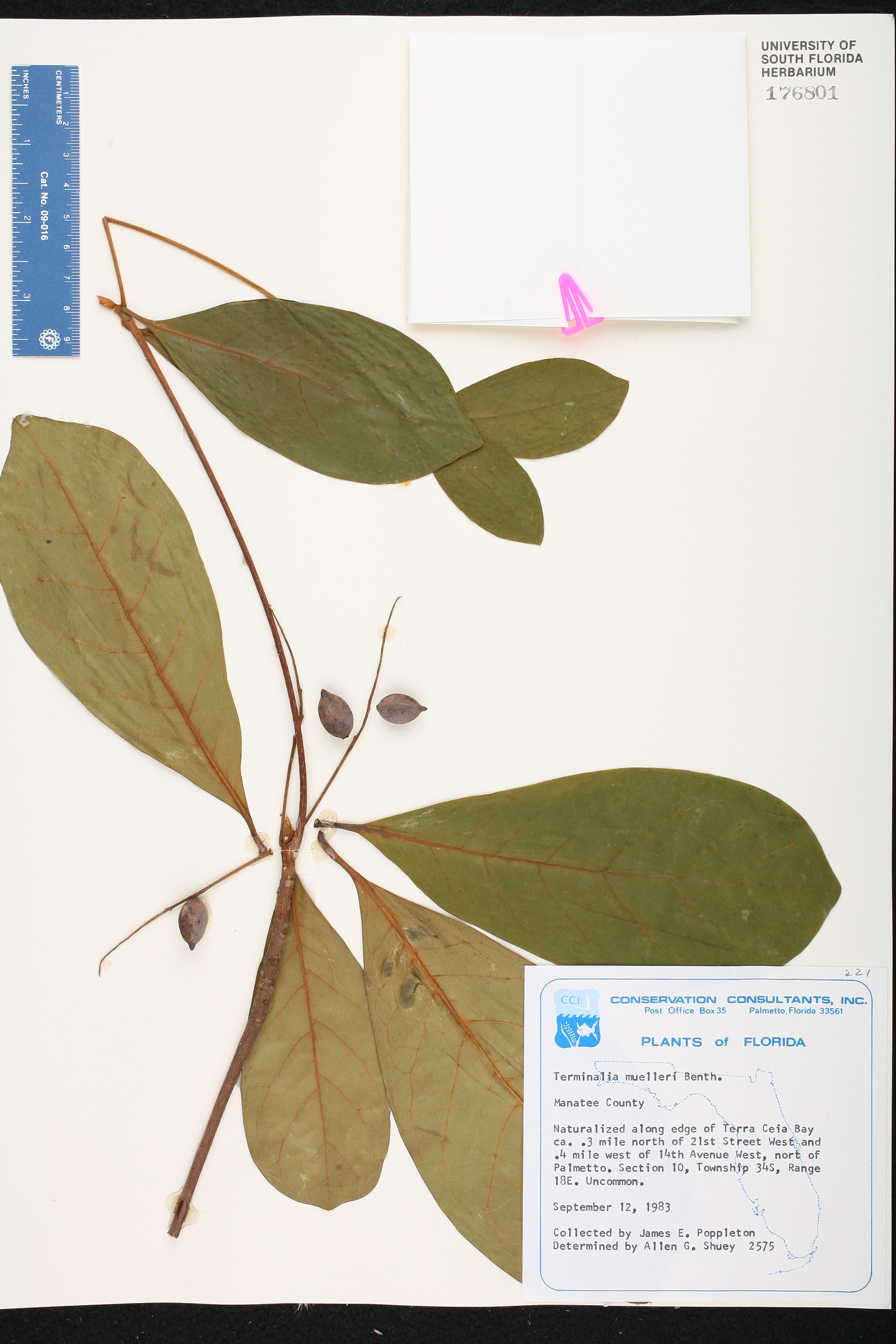Common Name: Australian almond
Family: Combretaceae
Common Synonyms: none
USDA Hardiness Zone: 10b-11
Growth Habit: Tree
Origin: Australia
FISC Category: 2
FDACS Listed Noxious Weed: No
Introduction Date: pre 1942
IFAS Assessment:

Deciduous tree to 15 m tall. Branches conspicuously whorled and horizontally tiered. Leaves simple, alternate, obovate, clustered on twigs, to 15 cm long and 8 cm wide, dark green, turning vivid red prior to leaf fall (usually at least one red leaf present). Lateral veins prominent, in 6-9 pairs. Margins entire, bases wedge shaped, apex broad, rounded, petiole to 1.3 cm. Inflorescence a slender, open, many-flowered spike, shorter than the leaves. Flowers small, white, petals lacking. Fruit a firm, fleshy drupe, ellipsoid, purplish-blue with a whitish bloom when mature, to 2 cm long and 1.3 cm wide, 1 seeded. Seed 1.3 cm by 1.0 cm. Resembles Terminalia catappa in habit, but smaller.
Rockland and coastal hammocks
Flowers and fruits all year. Seeds dispersed by water and animals. Resembles Terminalia catappa in habit, but smaller.

NA
Barrett, M. F. 1956. Common Exotic Trees of South Florida (Dicotyledons). University of Florida Press. Gainesville.
Langeland, K.A., H.M. Cherry, C.M. McCormick, K.C. Burks. 2008. Identification and Biology of Non-Native Plants in Florida's Natural Areas-Second Edition. IFAS Publication SP 257. University of Florida, Gainesville, Florida.
Langeland, K.A., J.A. Ferrell, B. Sellers, G.E. MacDonald, and R.K. Stocker. 2011. Integrated management of non-native plants in natural areas of Florida. EDIS publication SP 242. University of Florida, Gainesville, Florida.